Gorhams Cave Viewing Platform on Europa Advance Road on Gibraltar
By Nick Nutter | Updated 15 Mar 2022 | Gibraltar | Places To Go |
Login to add to YOUR Favourites or Read Later
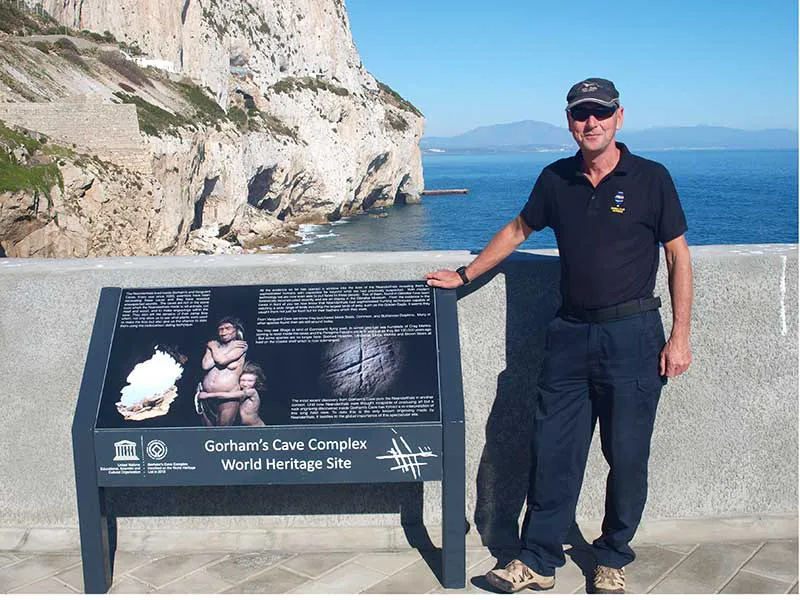
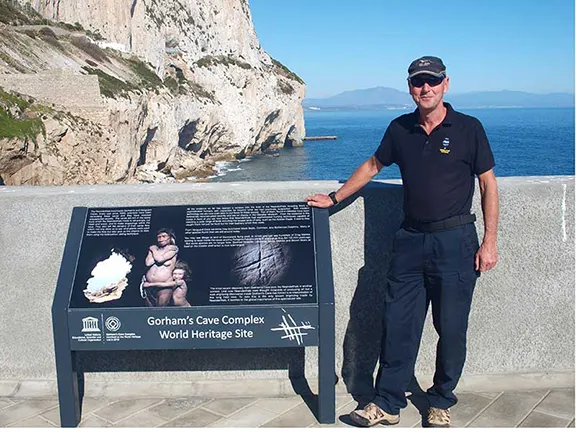
Phil Smith at the viewing platform
32,000 years ago the last of the Neanderthals in Europe died at Gibraltar. It would be 4,000 years before another human set eyes on the same view, a view very different to that of today. From the newly opened (13th December 2017) platform on Europa Advance Road, Phil Smith, the guide at the site, explained that for much of the time that Gorham’s Cave was occupied, first by Neanderthals and then modern humans, the sea levels had been up to 120 metres lower. From the mouth of the cave, now lapped by the waters of the Mediterranean Sea, the shore sloped gently up to 4.5 kilometres to the sea in an easterly direction. The shoreline narrowed sharply until it came to what is now Europa Point, barely half a kilometre south, where the coastal cliffs fell sharply into deep water, as they do today.
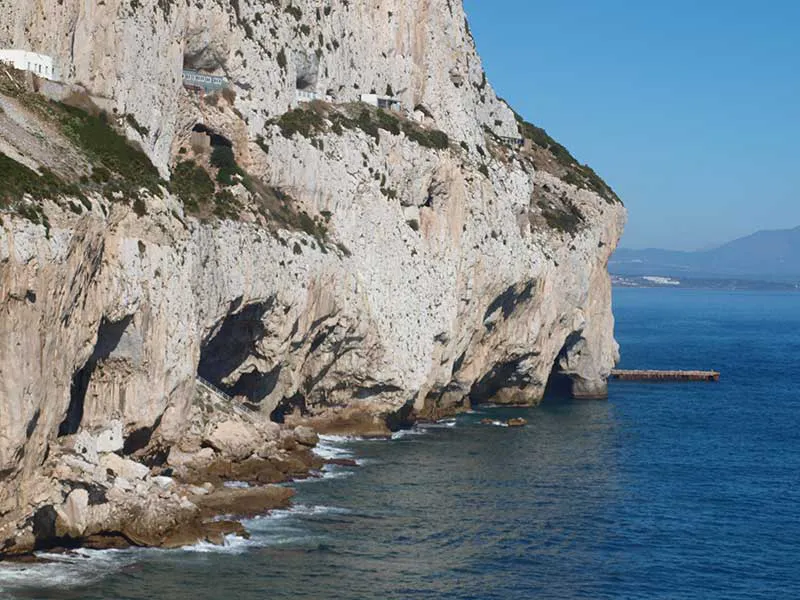
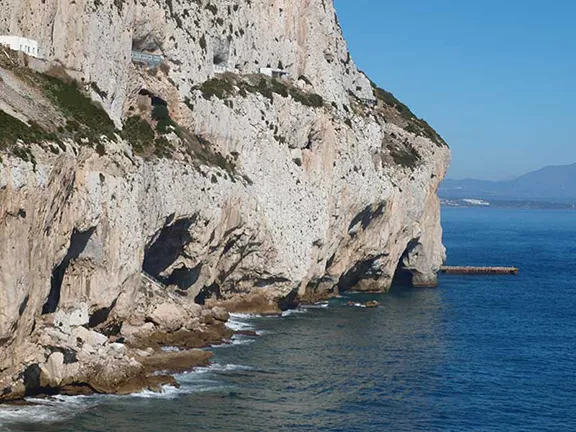
Gorham's Cave from the viewing platform
On the thinly wooded plain before them the inhabitants of the cave would have found fresh water springs, water that had percolated through the pervious limestone of The Rock before emerging to provide a resource not just for humans but plants and animals, including the Ibex, a native goat, that in turn fed and clothed those early Gibraltarians. They would also have utilised the outcrop of quartz, a prominent feature on the coastal plain, to make weapons. The cliffs to the south, encrusted with mussels and other crustaceans, provided a useful food supply when other sources failed. The diet would have been enhanced occasionally by seals and dolphins, probably stranded on shore rather than deliberately caught. Later Neanderthals made bracelets and necklaces from birds' claws and shells and adorned themselves with the long wing feathers of birds including those from eagles and vultures.
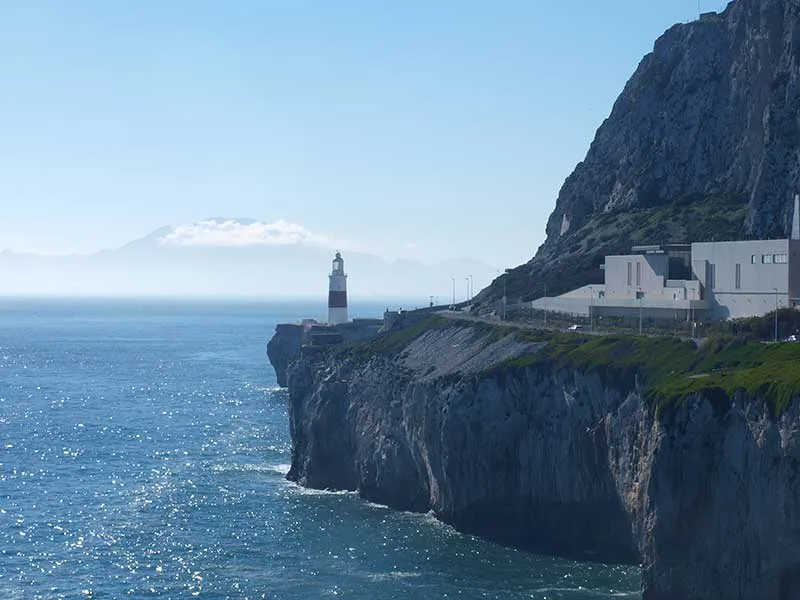
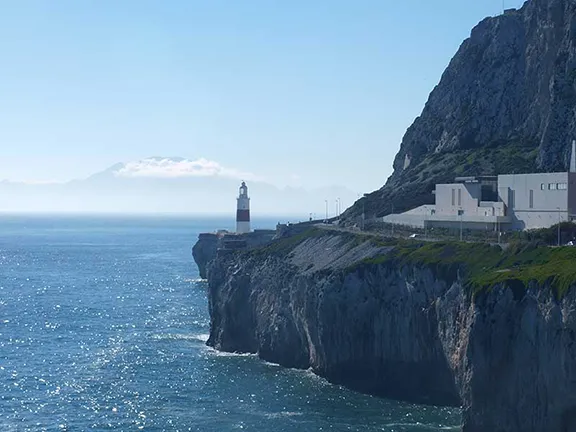
Europa Point east side looking south
There is evidence of early expressionism on a rock towards the back of the cave. Deliberately engraved lines dubbed the Neanderthal hashtag representing who knows what. The etching has been dated from the charcoal of a fire found at the same level nearby and appears to have been created right at the end of the Neanderthal tenancy period. Perhaps it is a desperate cry by the artist at the inevitable fate of this slowly decreasing population, a last record of ancestors. Whatever it represents it is at the moment unique in the Neanderthal world.
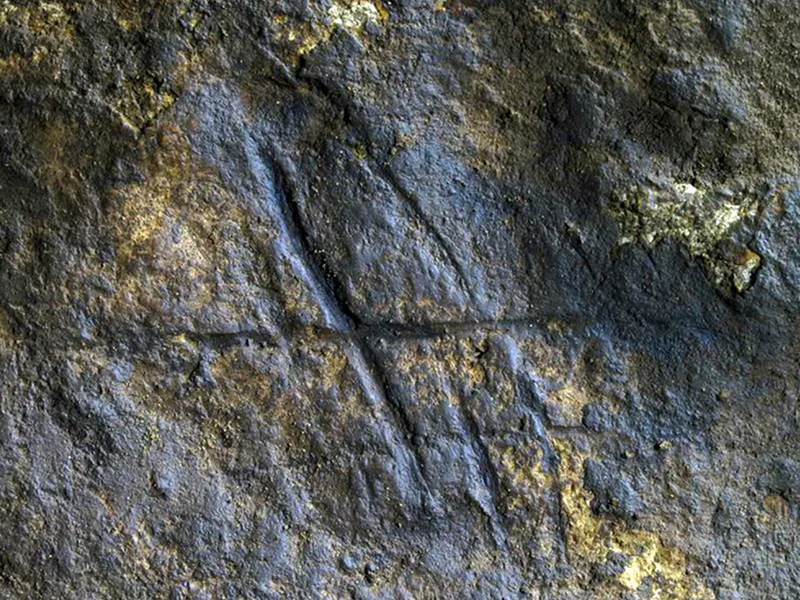
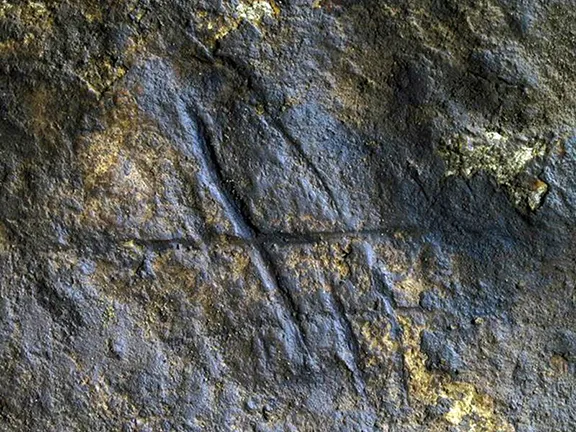
The Neanderthal Hashtag
The Neanderthals lived in small family groups, eight to twelve in number, and were nomadic. Even though Gibraltar had the resources necessary for a comfortable sedentary life, they still periodically moved on to other cave sites in southern Spain. Whilst on their travels they picked up flint that was used to make high quality tools that still, 32,000 years later, retain a sharp edge that will, according to Phil, cut through 7 sheets of paper with ease. The style of tools changed little between the archaeological levels recording the last Neanderthal occupation and the first modern human. The Neanderthals also compartmentalised their living area. The cave dwelling was divided into two areas by a fire used for cooking and defence against predatory animals such as the hyena. The forward area was an observation platform during the day whilst the area behind the fire was a warm secure location after dark. Compartmentalisation extended to the environment surrounding the cave. Alongside Gorham’s Cave is a second cave, Vanguard, equally suitable for occupation yet to date the indications are it was used primarily for seafood preparation. Further away, part way up The Rock, Ibex Cave is the scene of animal butchery where the animals would be dissected before being brought down to Gorham’s Cave.
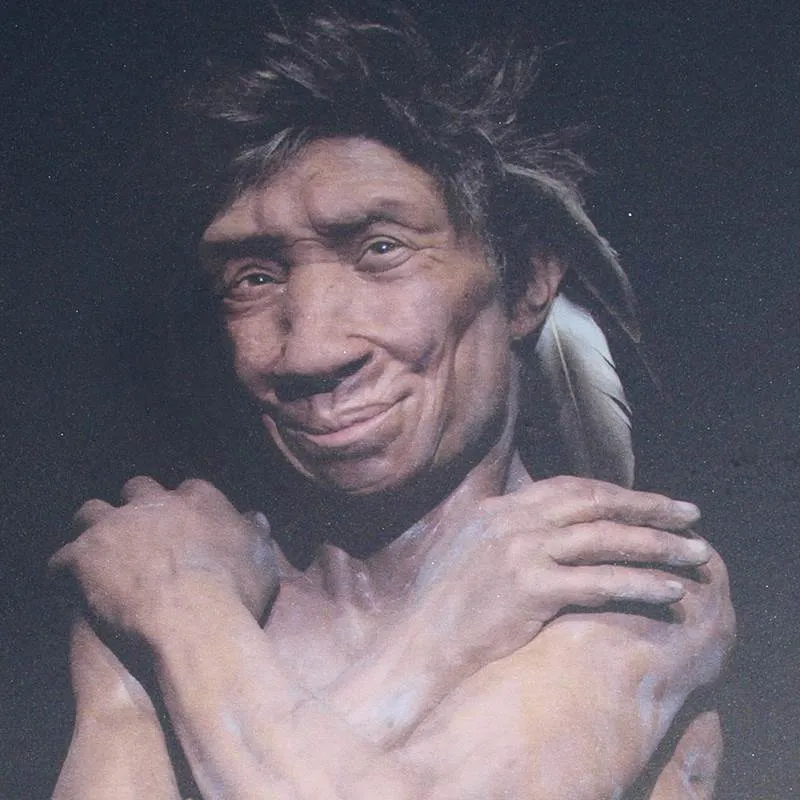
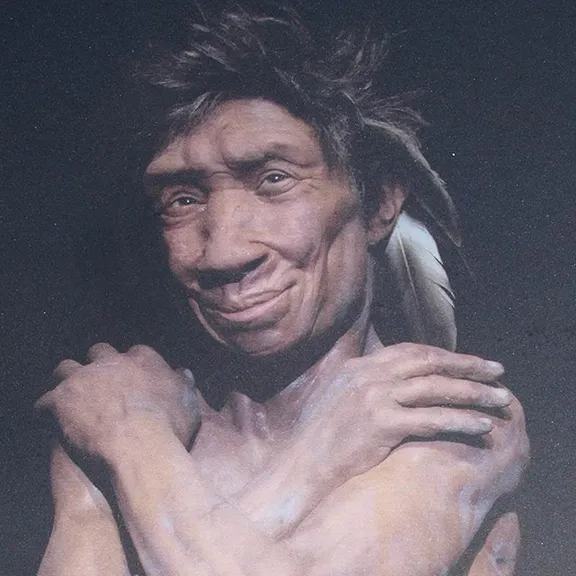
Computer Generated Image of Neanderthal Woman
There is no evidence of any burials or cremated remains in either Gorham’s or Vanguard Caves. The famous skull, now known as Gibraltar Woman, was found at Forbes Quarry in 1848, well away from the inhabited caves. A second partial skull, of a female child, was found in 1926 at Devil’s Tower Mousterian rock shelter, only tens of metres away from Forbes Quarry. A surprising find by a first year archaeological student in 2016 was that of a Neanderthal child’s tooth in excavated material brought from Gorham’s Cave. Still attached to part of the jaw bone the indications are that the child was taken into the cave by a hyena and consumed there.
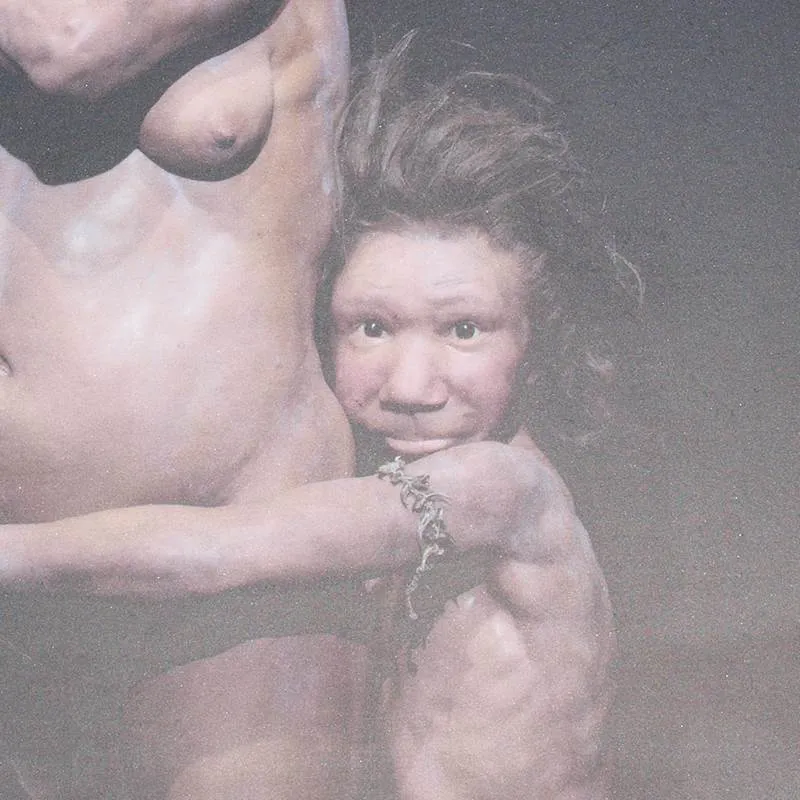
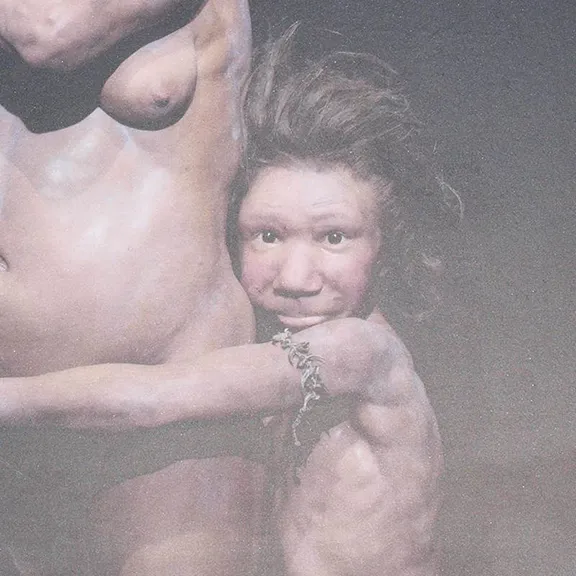
Computer Generated Image of Neanderthal Child
All this exquisite detail and more is the result of meticulous excavation and research by teams of specialists representing a number of disciplines including archaeology, botany, climatology, anatomy, geography and geology. Each summer these people work in the caves carefully sifting and sorting each level. Phil estimates there is work for another 5,000 years at the present rate of progress. The images of a Neanderthal woman and child are realistic recreations based on the skulls found and computer enhanced techniques to cover the skulls with muscle and flesh. In 2016, the cave complex and the slope behind to the top of The Rock, were declared a World Heritage Site.
The viewing platform is open 10am to 2pm Monday to Friday and costs £5 per person. Parking is available at the site.
For opening times and prices of Gorhams Cave Viewing Platform, click here